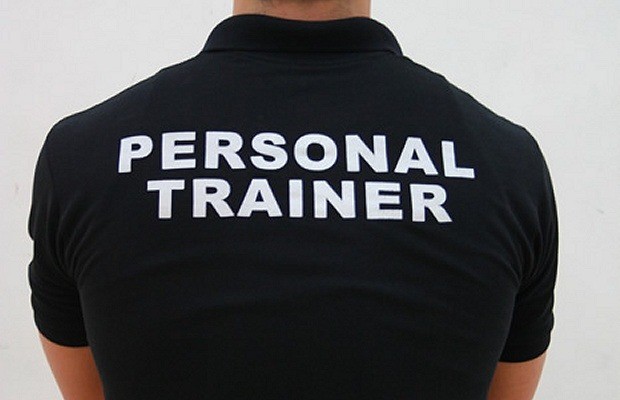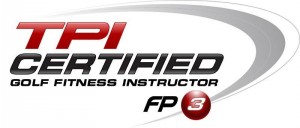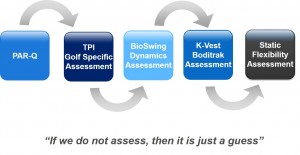Instruction
6 qualities to look for in a golf fitness trainer

Finding the right trainer can be challenging, but they are called “personal” trainers for a reason. Trainers are there to guide you to your personal fitness goals safely and effectively, and to do so they also need to fit with your personality. Finding a competent golf fitness coach is an even tougher task due to the lack of availability.
According to the U.S Bureau of Labor Statistics, the number of personal trainers in America will jump 24 percent by 2020. As the field grows, clients will need to do more research to find the right trainer to fulfill their needs.
Below are my six best rules to follow when researching a golf fitness trainer. There are numerous trainers out there to choose from, but only a small percentage are the right ones for you. Keep these six qualities in mind when doing your research for your trainer. www.MYTPI.com is a great place to start when looking for a golf fitness trainer in your area.
Assessment
Any good trainer knows the old saying, ”If you do not asses, it is just a guess.” With that being said, upon your first visit your trainer should have you fill out a Physical Activity Readiness Questionnaire or PAR-Q, discuss your long- and short-term goals and administer a complete physical assessment. The assessments is a very important tool in building a safe and effective plan of attack. TPI golf fitness trainers offer an in-depth, 16-point physical assessment that can identify the restrictions in the body that can adversely affect the golf swing. Without conducting an assessment the trainer has no idea where to start your program, and any exercise prescribed there forth is just a guess.
Patience
Patience is the key to a good client-trainer relationship. Trainers should understand that what works for one client may not work for another. Trainers should also be able to find a comfortable pace for their clients. Some clients may progress at a faster rate, while others may require more coaching and assistance. There is no cookie-cutter plan that fits everyone and a good trainer finds the right pace for the individual.
Communication
Your trainer should be able to explain things to you on the phone and teach you how to complete tasks without physically being present through every workout. A good trainer should also be able to give you “homework” so you can stay on the program between your scheduled sessions such as a pre-round routine to have you warmed up prior to a workout, range session or round of golf.
Professionalism
While it’s important to maintain a close relationship with a client, there also needs to be a level of professionalism. A trainer might carry your water or get you a towel if need be, but they should remain focused on the task at hand, your fitness goals. Cell phone calls and texting should remain at a minimum. If a personal call or text is totally necessary, then permission to do so should be asked. Lastly, the clothes your trainer wears should be simple and preferably a staff uniform. The attention should be on the client, not on what the trainer is wearing…. or not wearing to show off his or her physique.
Education 
Trainers should be able to show you an appropriate fitness certification for their area of expertise. To become certified, personal trainers must pass an exam through accredited organizations such as the National Academy of Sports Medicine (NASM) or the National Strength and Conditioning Association (NSCA), and in our case TPI (Titleist performance Institute). Most exams cover exercise physiology, program design, nutrition and functional anatomy. Each certification will offer different areas of expertise, but they are usually up to date with the latest fitness trends and research. The trainer should also assure the client that they do not and will not teach golf; they are just there to fix the physical issues so the PGA professional can do their job more efficiently. Many trainers try to be a “jack of all trades,” but sadly most are masters of none.
Personality
Once you have established that you want a trainer, you can start looking for them. A good way to research a trainer is to reach out to a few via the internet and see who offers a complimentary fitness evaluation to help you get acquainted with the trainer. www.MYTPI.com offers a directory of its certified professionals, as well as their credentials. As a client, you want to feel comfortable and trust that your trainer has your best interests in mind. You should ask for references and testimonials, and most trainers will be flattered to show you the good work that they have done in the past. Call the references so you can get a feel for the type of commitment the trainer will have toward helping you achieve your goals.
For any additional questions or comments please feel free to contact me via email at [email protected]
- LIKE46
- LEGIT7
- WOW2
- LOL0
- IDHT0
- FLOP3
- OB4
- SHANK21
Instruction
Clement: Laid-off or perfect fade? Across-the-line or perfect draw?

Some call the image on the left laid off, but if you are hitting a fade, this could be a perfect backswing for it! Same for across the line for a draw! Stop racking your brain with perceived mistakes and simply match backswing to shot shape!
- LIKE0
- LEGIT0
- WOW0
- LOL0
- IDHT0
- FLOP0
- OB0
- SHANK0
Instruction
The Wedge Guy: The easiest-to-learn golf basic

My golf learning began with this simple fact – if you don’t have a fundamentally sound hold on the golf club, it is practically impossible for your body to execute a fundamentally sound golf swing. I’m still a big believer that the golf swing is much easier to execute if you begin with the proper hold on the club.
As you might imagine, I come into contact with hundreds of golfers of all skill levels. And it is very rare to see a good player with a bad hold on the golf club. There are some exceptions, for sure, but they are very few and very far between, and they typically have beat so many balls with their poor grip that they’ve found a way to work around it.
The reality of biophysics is that the body moves only in certain ways – and the particulars of the way you hold the golf club can totally prevent a sound swing motion that allows the club to release properly through the impact zone. The wonderful thing is that anyone can learn how to put a fundamentally sound hold on the golf club, and you can practice it anywhere your hands are not otherwise engaged, like watching TV or just sitting and relaxing.
Whether you prefer an overlap, interlock or full-finger (not baseball!) grip on the club, the same fundamentals apply. Here are the major grip faults I see most often, in the order of the frequency:
Mis-aligned hands
By this I mean that the palms of the two hands are not parallel to each other. Too many golfers have a weak left hand and strong right, or vice versa. The easiest way to learn how to hold the club with your palms aligned properly is to grip a plain wooden ruler or yardstick. It forces the hands to align properly and shows you how that feels. If you grip and re-grip a yardstick several times, then grip a club, you’ll see that the learning curve is almost immediate.
The position of the grip in the upper/left hand
I also observe many golfers who have the butt of the grip too far into the heel pad of the upper hand (the left hand for right-handed players). It’s amazing how much easier it is to release the club through the ball if even 1/4-1/2″ of the butt is beyond the left heel pad. Try this yourself to see what I mean. Swing the club freely with just your left hand and notice the difference in its release from when you hold it at the end of the grip, versus gripping down even a half inch.
To help you really understand how this works, go to the range and hit shots with your five-iron gripped down a full inch to make the club the same length as your seven-iron. You will probably see an amazing shot shape difference, and likely not see as much distance loss as you would expect.
Too much lower (right) hand on the club
It seems like almost all golfers of 8-10 handicap or higher have the club too far into the palm of the lower hand, because that feels “good” if you are trying to control the path of the clubhead to the ball. But the golf swing is not an effort to hit at the ball – it is a swing of the club. The proper hold on the club has the grip underneath the pad at the base of the fingers. This will likely feel “weak” to you — like you cannot control the club like that. EXACTLY. You should not be trying to control the club with your lower/master hand.
Gripping too tightly
Nearly all golfers hold the club too tightly, which tenses up the forearms and prevents a proper release of the club through impact. In order for the club to move back and through properly, you must feel that the club is controlled by the last three fingers of the upper hand, and the middle two fingers of the lower hand. If you engage your thumbs and forefingers in “holding” the club, the result will almost always be a grip that is too tight. Try this for yourself. Hold the club in your upper hand only, and squeeze firmly with just the last three fingers, with the forefinger and thumb off the club entirely. You have good control, but your forearms are not tense. Then begin to squeeze down with your thumb and forefinger and observe the tensing of the entire forearm. This is the way we are made, so the key to preventing tenseness in the arms is to hold the club very lightly with the “pinchers” — the thumbs and forefingers.
So, those are what I believe are the four fundamentals of a good grip. Anyone can learn them in their home or office very quickly. There is no easier way to improve your ball striking consistency and add distance than giving more attention to the way you hold the golf club.
More from the Wedge Guy
- The Wedge Guy: Golf mastery begins with your wedge game
- The Wedge Guy: Why golf is 20 times harder than brain surgery
- The Wedge Guy: Musings on the golf ball rollback
- LIKE86
- LEGIT13
- WOW6
- LOL1
- IDHT0
- FLOP4
- OB1
- SHANK8
Instruction
Clement: Stop ripping off your swing with this drill!

Not the dreaded headcover under the armpit drill! As if your body is defective and can’t function by itself! Have you seen how incredible the human machine is with all the incredible feats of agility all kinds of athletes are accomplishing? You think your body is so defective (the good Lord is laughing his head off at you) that it needs a headcover tucked under the armpit so you can swing like T-Rex?
- LIKE0
- LEGIT2
- WOW2
- LOL0
- IDHT0
- FLOP0
- OB0
- SHANK2
-

 19th Hole2 weeks ago
19th Hole2 weeks agoDave Portnoy places monstrous outright bet for the 2024 Masters
-

 19th Hole2 weeks ago
19th Hole2 weeks agoTiger Woods arrives at 2024 Masters equipped with a putter that may surprise you
-

 19th Hole2 days ago
19th Hole2 days agoJustin Thomas on the equipment choice of Scottie Scheffler that he thinks is ‘weird’
-

 19th Hole2 days ago
19th Hole2 days ago‘Absolutely crazy’ – Major champ lays into Patrick Cantlay over his decision on final hole of RBC Heritage
-

 19th Hole3 weeks ago
19th Hole3 weeks agoReport: Tiger Woods has ‘eliminated sex’ in preparation for the 2024 Masters
-

 19th Hole1 week ago
19th Hole1 week agoTwo star names reportedly blanked Jon Rahm all week at the Masters
-

 19th Hole1 week ago
19th Hole1 week agoReport: LIV Golf identifies latest star name they hope to sign to breakaway tour
-

 19th Hole1 week ago
19th Hole1 week agoNeal Shipley presser ends in awkward fashion after reporter claims Tiger handed him note on 8th fairway
















Robb Gibb, PGA
Jan 9, 2016 at 10:51 pm
Ignore the comments above. Go spend time with James, he’s worth every penny.
Other Paul
Jan 4, 2016 at 1:44 am
Half of TPIs tour players have back pain. Makes me want to stay away from them. I was assessed by them, i had back pain and the exercises didnt help.
RoGar
Dec 28, 2015 at 7:52 pm
Eat right and exercise, stay away from money hungry trainers!!!
RoGar
Dec 28, 2015 at 7:49 pm
There is no such thing as “golf specific exercises”!!! I’ve played football and baseball in high school, and was fortunate to play baseball in college, D1… With running, jumping, and simple exercises none of them which included bosu, medicine, or yoga balls or elastic bands, let alone a trainer. Eating right and simple exercise goes a long way…Plus have been playing golf for 20 plus years to a +3 handicap…
KoreanSlumLord
Dec 26, 2015 at 9:02 pm
Ben Hogan, Sam Snead, and Jack Nicklaus would not have had the same success had they not had their TPI Certified trainer.